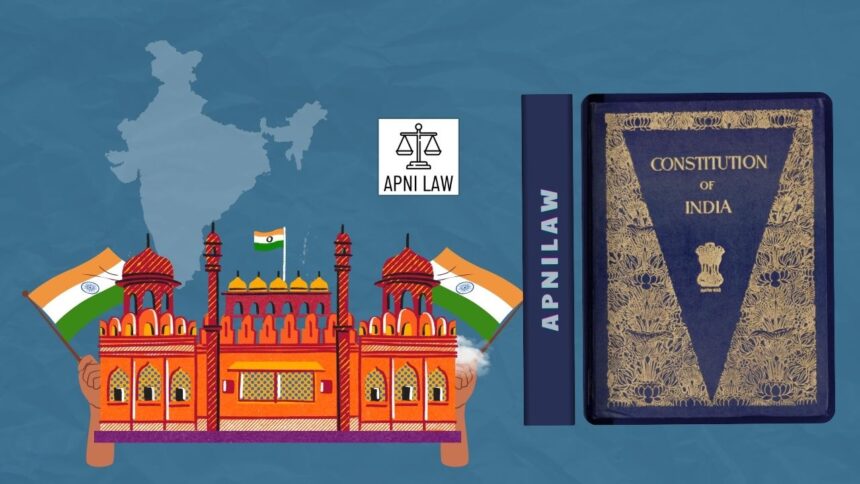Introduction
Water plays a vital role in India’s development, economy, and federal relations. With several rivers flowing across multiple states, disputes over sharing and management are common. To address this, Parliament enacted the River Boards Act, 1956. The Act aimed to promote cooperation among states, prevent conflicts, and encourage integrated water management. However, despite its framework, the Act has remained largely dormant, and alternative mechanisms now dominate river governance in India.
What is the River Boards Act, 1956?
The River Boards Act, 1956 was passed by Parliament under Article 262 of the Constitution. It gave the Central Government the authority to establish River Boards for inter-state rivers or river valleys. These Boards were meant to regulate and develop water resources in cooperation with states. The Act intended to provide a scientific, basin-wide approach to water management rather than piecemeal efforts by individual states.
The law empowered the Centre to constitute a River Board either at the request of state governments or on its own initiative. Each Board was expected to function as a corporate body with legal powers, jurisdiction, and a defined mandate. The ultimate aim was to ensure planned development, equitable water sharing, and effective dispute resolution.
What were the objectives and powers of River Boards?
River Boards had a wide range of functions. They were designed to advise states on regulation, conservation, and optimum use of river waters. It could prepare detailed plans for irrigation, flood control, pollution prevention, navigation, and power generation. They were also expected to coordinate among states and prevent conflicts.
The Boards had the power to prepare schemes for basin development. They could recommend joint projects, monitor existing works, and suggest measures for sustainable utilization. The corporate status of a Board allowed it to own property, enter contracts, and function with a degree of autonomy. In essence, the Act tried to balance central oversight with cooperative federalism by involving both the Centre and the states in water governance.
Why did the River Boards Act fail in practice?
Although the law created a framework, it was never fully used. Hardly any River Boards were constituted under the Act. Water disputes in India continued to arise, and instead of relying on River Boards, governments preferred ad hoc mechanisms. The Inter-State River Water Disputes Act, 1956 became the main legal instrument to handle such conflicts.
One reason for the failure was political. States were reluctant to allow central intervention in matters of river management, as water is a State subject under the Constitution. Bureaucratic inertia and lack of political consensus also made the Act ineffective. Over time, the River Boards Act came to be described as a “dead letter” in Indian water law.
How did the Act aim to improve water management in India?
The original purpose of the River Boards Act was forward-looking. It sought to integrate river basin development and avoid piecemeal approaches. India’s rivers are lifelines for agriculture, drinking water, power, and industry. Fragmented management often leads to over-extraction, pollution, and conflict.
By empowering River Boards, the Act tried to ensure equitable sharing and sustainable use. It was meant to encourage joint planning between states. In theory, this would reduce disputes and create long-term strategies for water security. However, the absence of implementation left these goals unrealized.
What alternative frameworks replaced the River Boards Act?
Since the Act remained unused, other mechanisms evolved. The Inter-State River Water Disputes Act, 1956 allowed the Centre to constitute tribunals to adjudicate disputes. Several famous cases, like the Cauvery and Krishna disputes, were decided through such tribunals.
At the same time, environmental regulations, groundwater control laws, and state-specific water policies began to fill the gap. The Central Ground Water Authority (CGWA) was set up to regulate groundwater extraction, particularly for industries. It issues No Objection Certificates (NOCs) and controls abstraction in stressed areas.
Central schemes such as river-linking projects, dam safety initiatives, and groundwater conservation programs also became part of the water governance system. In recent years, new bills such as the River Basin Management Bill, 2019 have been proposed to modernize the framework. These reforms aim to create river basin authorities with stronger powers of coordination and enforcement.
What is the role of states and the Union in water governance?
The Constitution places water in the State List. This means that states have the primary power to legislate on water supply, irrigation, and conservation. However, when rivers flow across state boundaries, Parliament has special powers to make laws for regulation and adjudication.
This division often creates tension. States want autonomy, but inter-state rivers require central coordination. For example, disputes between Karnataka and Tamil Nadu over the Cauvery waters or between Andhra Pradesh and Telangana over the Krishna waters show how difficult coordination can be. The River Boards Act was meant to bridge this gap, but in its absence, ad hoc tribunals and central interventions dominate.
How does groundwater management fit into the picture?
Surface water disputes often attract attention, but groundwater is equally critical. India is one of the largest users of groundwater in the world. The CGWA regulates its extraction, especially by industries. It also identifies “critical” and “over-exploited” areas where strict controls apply.
States also have their own groundwater laws. Some require registration of wells, licensing of drilling, and restrictions in stressed zones. Together with surface water management, these measures try to create a comprehensive framework. However, enforcement remains weak, and over-extraction continues in many regions.
What challenges continue in water management?
Despite several laws, water management in India faces persistent challenges. Jurisdiction is fragmented between the Centre and states. Bureaucratic delays often slow down dispute resolution. Political pressures make equitable sharing difficult. Climate change and population growth add new stress by reducing water availability and increasing demand.
The lack of integrated basin management is another challenge. While the River Boards Act envisioned a holistic approach, the absence of functional boards has left planning divided. Pollution from industries, untreated sewage, and agricultural chemicals further degrade river health. Conflicts between upstream and downstream states intensify in years of drought.
What reforms are being debated for the future?
Experts argue that India needs a modern river basin management law. Proposals such as the River Basin Management Bill, 2019 suggest creating authorities for each major river system. These authorities would prepare plans, coordinate projects, and enforce regulations. They would balance the interests of states while ensuring sustainability.
Another area of reform is dam safety. With hundreds of dams across the country, maintenance and safety protocols are critical. Parliament passed the Dam Safety Act, 2021 to address this. Integrated groundwater and surface water planning is also being promoted. The government emphasizes water conservation through schemes like Jal Shakti Abhiyan.
The debate also involves federal relations. States fear losing control, while the Centre insists on coordination. Finding a balance is key to successful reform. Without cooperative federalism, no legal framework can work effectively.
Why does the River Boards Act remain relevant today?
Even though the Act has not been used, its principles remain important. Basin-wide management, cooperation between states, and integrated planning are still the best way forward. The experience of countries like the United States with the Tennessee Valley Authority shows that river basin organizations can succeed.
India’s water challenges are growing with urbanization, industrialization, and climate change. Revisiting the spirit of the River Boards Act could provide a foundation for modern reforms. The law may need updating, but its vision of planned, cooperative water management continues to hold relevance.
Conclusion
The River Boards Act, 1956 was a pioneering step in Indian water law. It offered a framework for cooperative management of inter-state rivers. Yet, political reluctance and bureaucratic inertia prevented its implementation. Instead, tribunals, central interventions, and ad hoc mechanisms have shaped water governance.
India today faces urgent water challenges, from disputes between states to over-extraction and pollution. New reforms like the River Basin Management Bill and dam safety laws show attempts to modernize the system. But true progress depends on political will and cooperative federalism.
In essence, the River Boards Act remains a missed opportunity. Its unrealized vision highlights the need for integrated, basin-wide water management. As India moves forward, revisiting and modernizing this framework may prove essential for sustainable water security and harmony among states.







